Nauticam新款广角外挂镜WACP测试
2017-10-10

Alex Mustard presents a detailed examination on the philosophy behind and the performance of Nauticam’s forthcoming Wide Angle Corrector Port - WACP, a product aimed squarely at serious full frame stills and video shooters. Alex introduces this new product, explaining why a water contact lens offers advantages over dome ports (in plain English, wherever possible), and shares thoughts, data and a portfolio of images that may change the way we think about achieving maximum image quality underwater.
Alex Mustard近期发布了一个详细的研究和性能介绍,是关于Nauticam即将发布的广角转换镜头——WACP。一款针对使用全幅相机和视频拍摄的摄影师们使用的镜头。Alex介绍了这款新的产品,并解释为什么水下的湿镜会比陆上镜头加镜头罩更有优势(尽可能用通俗易懂的英文)。他分享了他的想法,数据和一系列图像,这可能会改变我们对拍摄高质量水下照片的想法。
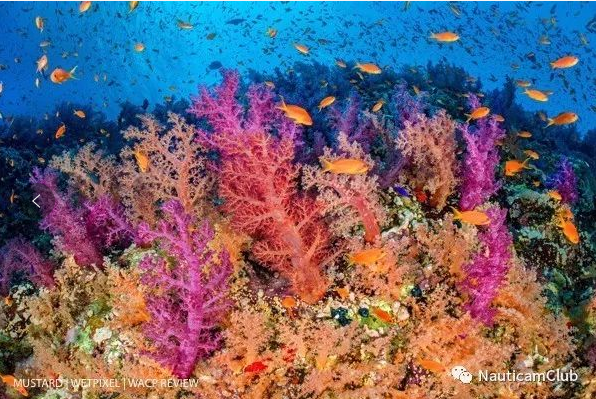
Nauticam新镜头WACP即将发布. 它的到来使我们重新思考在水下实现最佳质量图像的真正瓶颈在哪里. Red Sea scenery, June 2017. Nikon D5 and Nikon 28-70mm @ 28mm. Nauticam WACP. 1/160th @ f/18, ISO 640.
WIDENING THE BOTTLENECK
拓宽瓶颈
As I settle down to write this, Nikon have released the new D850 with 46MP and according to my Facebook feed, scores of my friends have found their new camera and are busy emailing manufacturers telling them they need the housing now, or ideally yesterday. Nikon, Canon and Sony all now offer full frame still cameras that exceed 40 megapixels and for our video shooting brethren, the message from their manufacturers is that you are wasting your time pressing record if it is only 4K, even more resolution is clearly the future! And while those with older cameras might chuckle at this pixel chasing, I think we’d all like our best shots to be captured at the optimum quality, in the highest possible resolution.
当我坐下来写这篇文章的时候,尼康发布了全新4600万像素的D850相机。通过我的facebook好友圈,我看到很多朋友都在忙着写邮件给制造商要防水壳,希望立刻就能拿到,甚至更早。尼康,佳能,索尼现在都生产全幅相机,超过4000万像素,支持视频功能。从这些制造商的信息来看,用4K拍摄显然已经是最基础的了,因为未来的分辨率会更高。可能一些老用户会嘲笑追逐高像素的人,但我想我们都希望运用现有的设备,拍到最好的最佳画质的图像,在尽可能高的分辨率下。
A consequence of ever increasing resolutions is photographers can look deeper into the detail of their images than ever before. And we don’t always like what we see. As a result, we’ve all become a pickier about image quality, not only compared to when we squinted through a loupe on a Lightbox, but also compared with digital cameras of just a few years ago. It’s understandable that when we’ve invested in the latest and greatest camera we want to extract its full performance underwater.
越来越高的分辨率促使摄影师可以比以往更深入地观察他们的图像细节。然而我们总是不满意我们拍到的。最终,我们在图像质量这个问题上都成了一个非常挑剔的人。这不仅表现在我们眯起眼睛在取景器里看图,与几年前数码相机相比同样如此。这是可以理解的,当我们投资一部最新最好的相机时,我们想竭尽所能的将它的全部性能在水下呈现出来。
There’s an old saying in underwater photography that if you want better pictures, don’t buy a better camera, but spend your money on diving in better water! But jokes aside, as long as we are close to the subject, as good photographers invariably are, the problem is rarely the water, but the optical problems of shooting underwater. Therefore, the biggest bottleneck to image quality is not the water itself, but the barrier between the air inside the housing and the water beyond (and what shooting through this does to the image quality.)
在水下摄影圈有句老话:如果你想要更好的照片,不要花钱买更好的相机,花钱去更清的水里潜水才是王道!把笑话放在一边,对于优秀的摄影师来说,我们总能很靠近被摄物,水便不是问题,关键因素是水下的光学问题。因此,水下图像质量最大的瓶颈不是水本身,而是防水壳内的空气和之间的水(通过这种状态拍摄的物体才是影响画质的因素。)
A dome port is the typical solution in wide angle photography. Domes have many pluses, but by making the air-water interface curved they introduce some serious degradation to our image quality. The most common manifestation, that we are all familiar with, is the blurring of detail in the corners of wide angle photos. This problem is most prevalent on full frame cameras, with small dome ports, incorrectly positioned dome ports, at more open apertures and with rectilinear, rather than fisheye, lenses.
用球面镜头罩来拍摄广角照片是摄影师常用的方法,球面罩有很多的好处,但弯曲的空气-水界面却会严重降低相片质量。最常见我们最熟悉的问题是,边缘细节模糊。这个问题在全幅的相机中普遍存在,尤其是当广角镜配用了小的球面玻璃罩,错误的加长环,和用大光圈拍摄。
It is this problem that Nauticam is addressing with their new Wide Angle Corrector Port, which uses fully corrected water contact optics to tackle the limitations of a dome port. The aim is to create a wide angle zoom, with a maximum field of view (FOV) of 130˚, which is wider than either the Canon 11-24mm (126˚ FOV) or Nikon 14-24mm (114˚ FOV), that also produces excellent underwater image quality across the frame, even at more open apertures.
基于这个问题,Nauticam研发了新的广角镜头转换镜,它可以完美校正水下接触面的光学问题,解决了普通镜头罩的限制。目标是创建一个广角变焦,最大视角130°的镜头。比佳能 11-24mm (126˚ FOV) or 尼康 14-24mm (114˚ FOV)更宽。即使使用大光圈,在全幅相机上也能得到完美的高质量的水下图片。
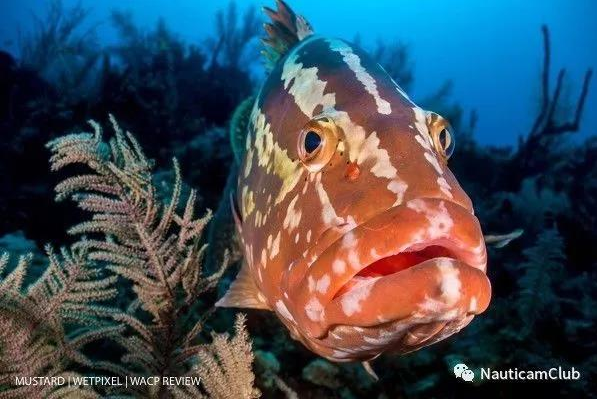
Nauticam WACP是一个镜头和镜头罩的合体, 专门为水下设计,与普通镜头罩对比,图片质量得到了很大的提升。Used with the 28-70mm zoom it also offers unrivaled versatility in FOV, from 130˚ to 57˚. Nassau grouper in Cuba, August 2017. Nikon D5 and Nikon 28-70mm @ 60mm. Nauticam WACP. 1/100th @ f/12, ISO 640
WHAT IS THE WACP?
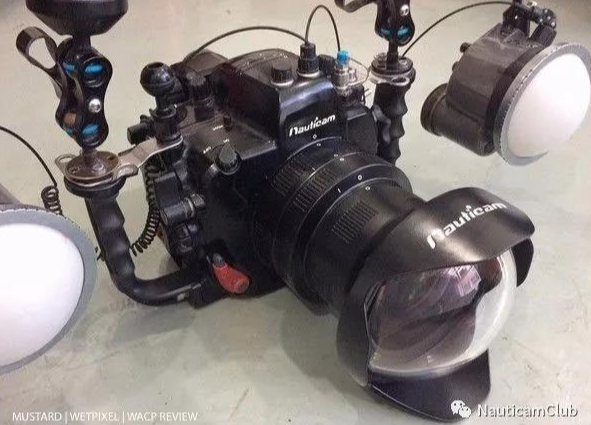
Nauticam WACP,Jason Isley’s Nikon D800防水壳, 完成临时浮力配置(WACP发布时会有专用浮力环)Jason和Alex都测试了 WACP。
The WACP is a lens and a port all in one. It is designed to be used in front of a standard land lens (up to 28mm on full frame, which provides the autofocus, exposure control etc.), while the WACP corrects the lens to see perfectly underwater and expands it into a wide angle with a field of view to 130˚, introducing some mild barrel (fisheye) distortion. To perform this transformation the WACP contains multiple elements of high quality optical glass – about 3 kg worth or well over 6 lb, all there to deliver excellent image quality underwater.
WACP是一款镜头和镜头罩与一体的水下镜头。它的设计是搭配陆地的标准镜头使用(全幅28mm以上,提供自动对焦,曝光控制等)WACP能校正镜头,在水下得到完美图像的同时,提供130°广角视角,尽可能减少了图像畸形。WACP有多组光学镜片组成,重量3KG或6磅以上,所有这些都是为了在水下提供高质量的图像。
If you are familiar with Nauticam’s WWL-1 lens, you can think of the WACP as the pro version, intended expressly for full frame stills and high-end cinematography. Like the WWL-1, the WACP is designed to work with lenses with a field of view up to 75˚ (14mm on M43 or 28mm on FF). This gives plenty of options for full frame photographers, including 28mm prime lenses and zooms, such as the 28-70mm. However, lenses with really large front elements don’t work well with the WACP, and physically smaller lenses actually give the better results. Nauticam initially favored Nikon 28mm primes (f/1.8 and f/2.8) in their tests, while in the field, I favored the versatility of a 28-70mm (f/3.5-f/4.5), which becomes a 130˚ to 57˚ FOV lens (for comparison the Canon 11-24mm is 126˚ to 84˚ FOV and Nikon & Canon 16-35mm are 107˚ to 63˚ FOV).
如果你使用过WWL-1,那么你可以理解WACP是它的一个专业版,专门针对全幅相机和高端影视制片使用。与WWL-1一样,WACP是设计与75°视角镜头搭配使用,(M4/3是14mm端,全幅是28mm端)这给全幅摄影师带来很多选择,包括28mm定焦头和变焦头,例如28-70mm。然而,大的镜头并不能很好的与WACP镜头搭配,选择小一些的镜头会有更好的结果。Nauticam起初用28mm(f/1.8 and f/2.8)测试。但在现场,我偏好用28-70mm(f/3.5-f/4.5),镜头视角可以从57°到130°。(Canon 11-24mm is 126˚ to 84˚ FOV and Nikon & Canon 16-35mm are 107˚ to 63˚ FOV)
So far the testing has been Nikon biased, but the WACP is not restricted to any brand of camera or specific lenses. Also, like the popular SMC, there is no reason that the WACP can’t be used with any housing brand (with an appropriate adaptor).
到目前为止,测试都是用Nikon的镜头,但WACP并不局限与任何品牌和镜头。就像SMC一样,WACP可以适用于任何品牌的防水壳(搭配一个合适的转换器)
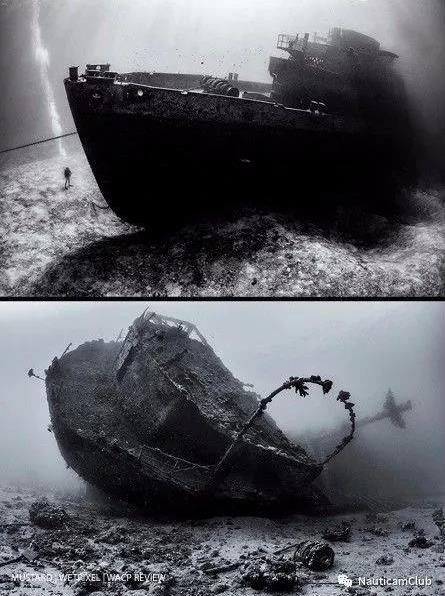
At 130˚ FOV the WACP is wide enough for most subjects. Top, Kittiwake in Grand Cayman. Bottom, Chrisoula K in Egypt. Both Nikon D5 and Nikon 28-70mm @ 28mm. Nauticam WACP.










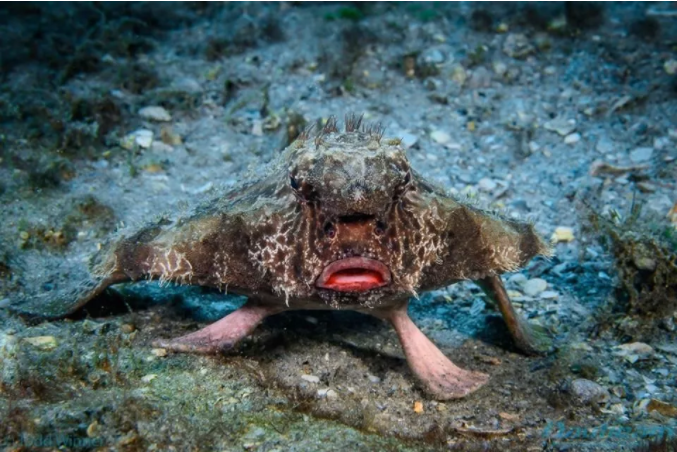
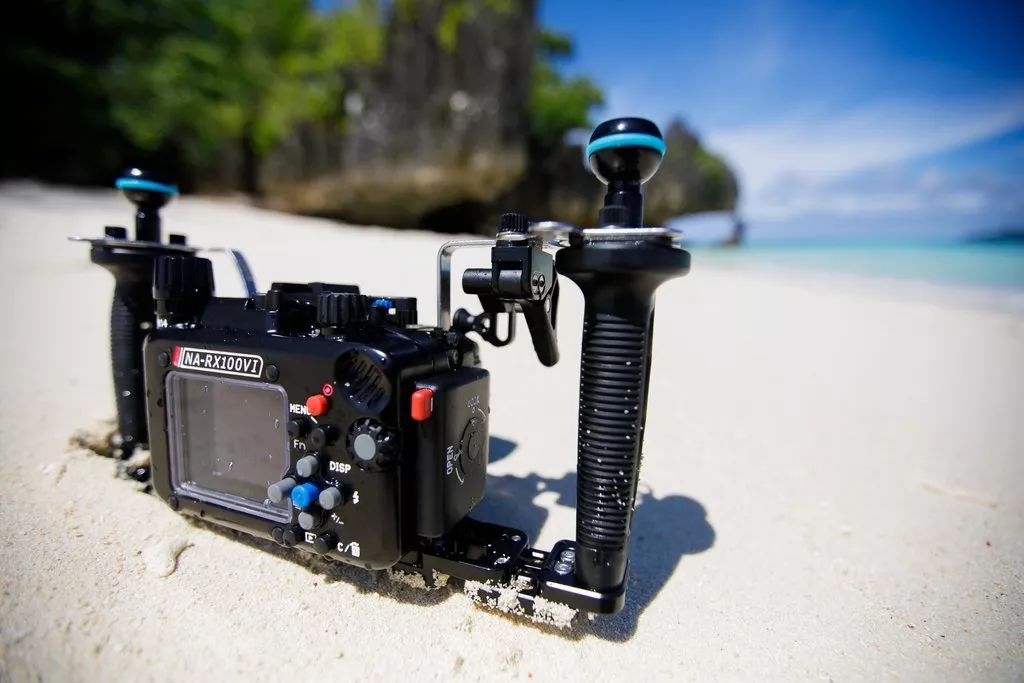



 粤公网安备 44030402001314号
粤公网安备 44030402001314号